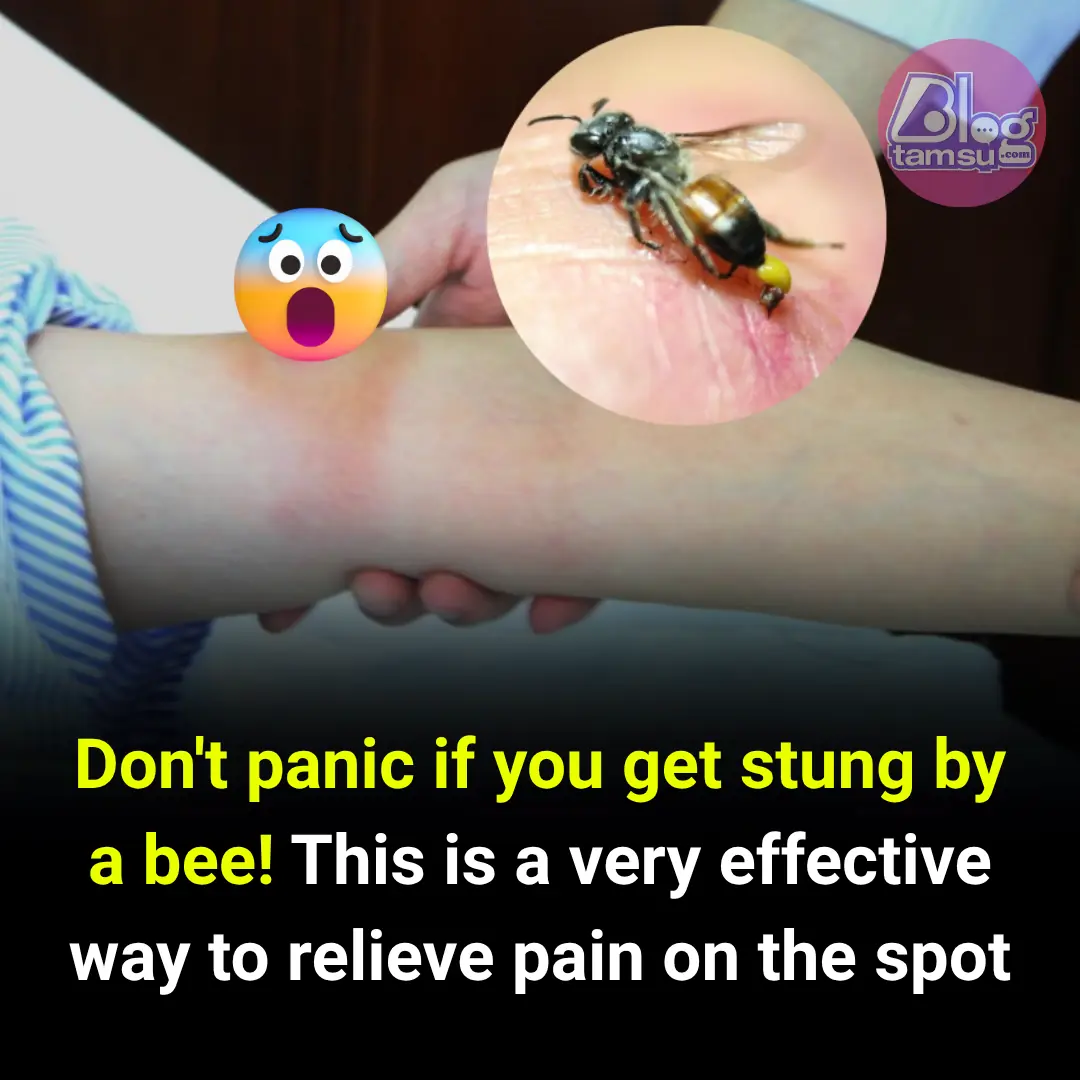How to relieve bee sting pain at home

1. Symptoms of a Bee Sting
Bee stings are a common accident in daily life, especially during the spring and summer months when bees are most active. Vietnam is home to various types of bees, and some of the most likely to sting include honey bees, hornets, wasps, and yellow jackets. Symptoms vary depending on the individual’s allergic response, the number of stings, and whether the sting was from a venomous bee. A bee sting can trigger different reactions, ranging from temporary pain and discomfort to severe allergic responses.
- Mild Reaction:Symptoms are usually minor, such as a burning sensation and slight redness or swelling around the sting site. Most pain and swelling subside within a few hours.
- Moderate Reaction:Some people experience a stronger reaction, including increasing redness and swelling at the sting site that worsens over one to two days. These symptoms typically improve within 5 to 10 days.
- Severe Allergic Reaction (Anaphylaxis):Though rare, anaphylaxis can be life-threatening and requires immediate medical attention. Signs include skin reactions such as hives, itching, or redness, difficulty breathing, swelling of the throat or tongue, weak and rapid pulse, nausea, vomiting or diarrhea, and loss of consciousness.
2. How to Relieve Pain from a Bee Sting
For typical stings that don’t cause an allergic reaction, home treatment is usually sufficient. However, if you have an allergic reaction or are stung multiple times, seek medical care immediately.
Steps to take after being stung:
- Remove the stinger immediately.Bee stingers contain venom that continues to release into the skin for a few seconds after the sting. Use a fingernail or a piece of gauze to gently scrape it off. Never use tweezers or squeeze the sting, as this can inject more venom into the skin.
- Clean the area with soap and water.Applying a cold compress (wrap ice in a cloth) to the sting can help reduce pain and swelling. Apply for 20 minutes each hour if necessary. However, if swelling spreads to other parts of the body such as the face or neck, go to the emergency room immediately, as this may indicate an allergic reaction. Other signs include difficulty breathing, nausea, hives, or dizziness.
- Avoid scratching the sting site,as this can worsen the itching and swelling and increase the risk of infection.
- Take an antihistaminesuch as diphenhydramine or a non-drowsy option like loratadine to relieve itching and swelling.
- Use over-the-counter pain relieverslike Acetaminophen or Ibuprofen to manage pain if needed.
- Apply hydrocortisone cream or calamine lotionto the affected area to help reduce redness, pain, itching, and swelling.
- If you have a history of severe reactions to bee stings,take antihistamines or use an epinephrine auto-injector (if prescribed) as soon as possible and go to the nearest medical facility immediately.
Although most people do not experience serious reactions, it is important to monitor anyone who has been stung in case symptoms worsen. If you notice any signs of an allergic reaction, seek medical care without delay.
3. How to Prevent Bee Stings
Bee stings are common but should not be taken lightly, as they can lead to severe allergic reactions and even life-threatening anaphylaxis. In addition to knowing first-aid procedures and pain relief methods, it’s important to practice prevention:
-
Avoid areas where bees are active or nesting.
-
Do not disturb or touch beehives, and make sure to educate children about this danger.
-
Avoid entering areas with dense vegetation at night, as bee nests can be harder to spot. Accidentally disturbing a hive at night can make escape more difficult and emergency treatment more complicated.
-
Wear full protective clothing when handling beehives. Make sure no skin is exposed.
-
If bees pose a risk and you need to drive them away, use smoke or fire instead of disturbing their hive directly.
-
Wear protective clothing that covers arms and legs, a hat with a face shield, and closed shoes to avoid getting stung.
Final Notes
While bee stings can be painful, the discomfort is usually temporary. If stung, try to remain calm, remove the stinger promptly, clean the area with soap, and apply a cold compress to reduce swelling. You may also take over-the-counter pain relievers to ease the pain.
However, severe allergic reactions to bee stings can occur. If you experience difficulty breathing, hives, or any symptoms of anaphylaxis, seek emergency medical attention immediately.